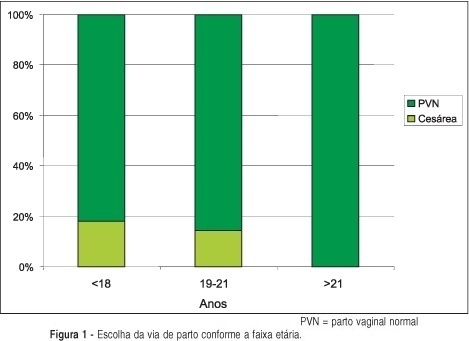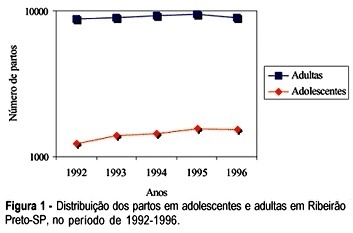Summary
Revista Brasileira de Ginecologia e Obstetrícia. 2004;26(10):791-798
DOI 10.1590/S0100-72032004001000006
PURPOSE: to find out the preference in regard to the way of delivery among primigravidae, as well as the reasons for their choice, in order to improve the quality of the doctor-patient relationship. METHODS: a qualitative-type study was conducted through analysis of the collective subject, including primigravidae attended from September to November 2003 at the emergency rooms of the hospital of the "Faculdade de Medicina de Jundiaí". A questionnaire, specially developed to accomplish the proposed objectives was applied. An informed and free consent, signed by the pregnant woman and one of the researchers in charge was obtained. This questionnaire was based on doubts of patients attended at this hospital some months before the trial. For the purpose of sample standardization, the patients' selection followed some inclusion criteria: age above 16, primigravidae that were receiving prenatal assistance and a post-informed and free consent. Mental disorders and clinical and/or obstetric pathologies that could interfere in the patient's choice were considered exclusion criteria. RESULTS: the studied population had as prevailing profile women in the third quarter of gestation, above 21 years of age, white, married and with completed school. Most of the women (90%) preferred vaginal delivery for the following main reasons: ease to be done (94%) and the fear of suffering and pain during the postpartum period caused by cesarean section. There was a relationship between older and married women and the preference for vaginal delivery, with no significant difference between races. CONCLUSION: these results show an enormous contrast between women's preference and the high cesarean section rates in Brazil. We conclude that there may be a lack of information and dialogue between the health professionals and patients about the possible difficulties, doubts and anxieties that involve the women's choice for a specific way of delivery. From an ethical point of view, we conclude that obstetricians should question every cesarean section indication and take into account the women's right to choose, without ignoring clinical criteria, when making the medical decision about the way of delivery.

Summary
Revista Brasileira de Ginecologia e Obstetrícia. 2004;26(8):633-639
DOI 10.1590/S0100-72032004000800007
PURPOSE: to check whether there were differences in some social indicators between adolescent and adult pregnant women in the city of Ribeirão Preto, from January 1992 to December 1996. METHODS: the information was obtained from hospital discharge forms and was analyzed at the Hospital Data Processing Center of the FMRP-USP. The analyzed parameters were: number and types of deliveries, category of hospital admission, occupation, and obstetric diagnosis. The 6.04a text processor Epi-Info System, a data bank and statistics of epidemiology produced by the Centers of Disease Control and Prevention (Atlanta, GA, USA), and Dbase IV were used to process the information. The association between variables was tested by the chi² test, with level of significance set at 5%, using the GraphPad Prism version 2.0, 1995 software. RESULTS: a total of 43,253 deliveries occurred during this period, among which 7,134 (16.5%) corresponded to adolescent deliveries, while 36,119 (83.5%) to adult deliveries. The number of deliveries by adolescent girls increased 25.5% along this period. The proportion of adolescent deliveries in the unified health system category of admission increased, and it was higher than that of the adults'. Only 14.1% of the adolescents belonged to the economically active population, comparing with 34.8% of the adults. Only 6.8% of the adolescents were students, while 79.0% were house-workers or had a nonpaid occupation. In the analyzed period, the ratio of vaginal delivery increased among the adolescents, as compared to that of the adults. The ratio of cesarean delivery persisted stable and higher among the adults. Premature delivery and false labor were significantly more frequent among the adolescents. CONCLUSION: the number of deliveries increased among the adolescents, and most of them were normal. The ratio of admission by the unified health system category and that of vaginal delivery were higher among the adolescents. There were more adolescents without an economically active work. Thus, we recommend strategies to prevent adolescent pregnancy, mainly among the poor population.
